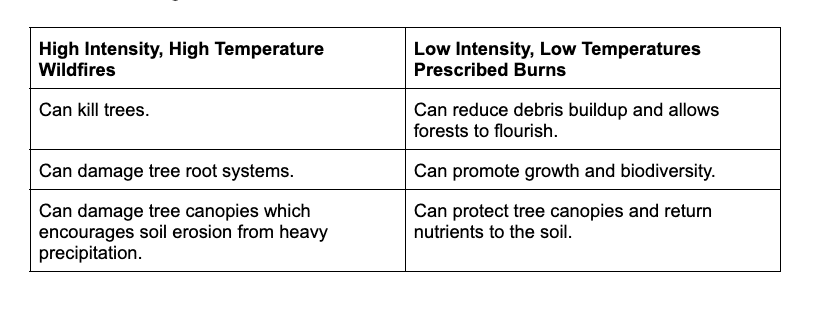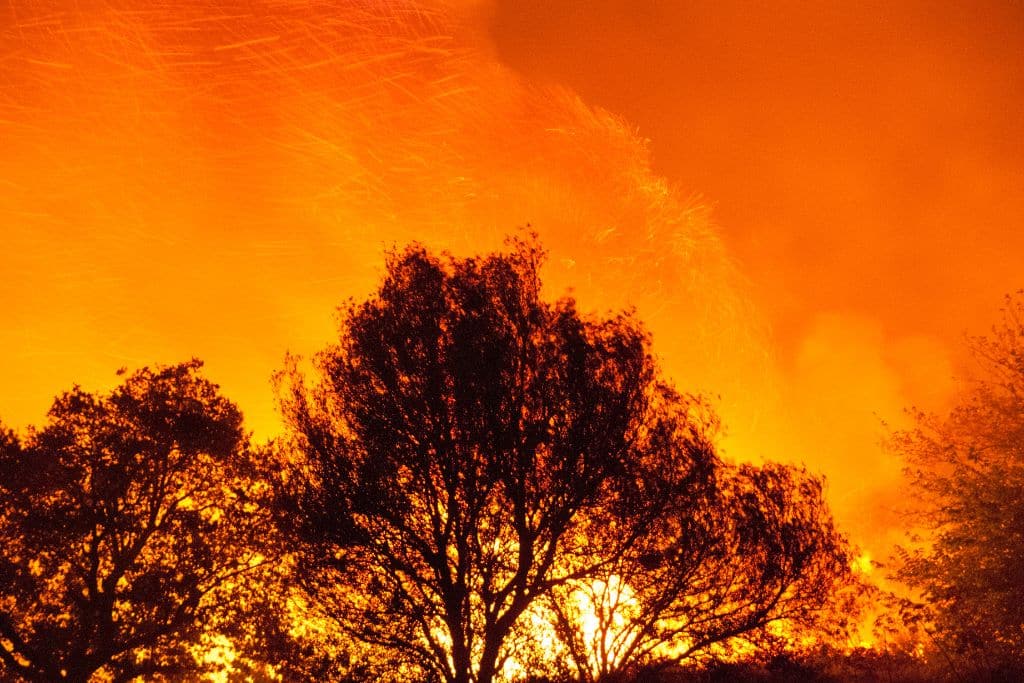Wildfires mitigation in North America has changed throughout time. However, understanding past and present-day relationships between forest and fire can help the US to better manage these devastating events and mitigate their consequences on communities and the environment.
—
Relationship of Landscape and Humans Pre-15th Century
Already in pre-colonisation times, many indigenous peoples understood the importance of low-intensity wildfires – also known as ‘prescribed burns’ – to promote forest health. Indigenous forest practices involved prescribed burns to keep the forest understory clean, remove tree-loving pathogens, and promote growth and biodiversity. This symbiotic relationship between fire, forest, and humans allowed humans and the forest to flourish off the land. When European settlers arrived in North America, the landscape was reshaped and thriving forests were lost.
Land Ties Severed: Post-Colonisation
When European settlers colonised North America, they perturbed the balance of wildfires and land management. In a research paper, Jan W. van Wagtendonk from the Western Ecological Research Center, Yosemite Field Station, explains how Europeans reshaped the landscape by tilling grasslands, replacing forest lands with agriculture, logging forests, and pushing Indigenous peoples out of their homelands with disease driving the symbiotic relationship between humans and forest to be severed. Consequences of settlers reshaping the landscape increased the amount and severity of wildfires through logging debris catching fire. Additionally, the loss of prescribed burns promoted understory and brush to catch fire, resulting in high-intensity forest fires. The promotion of healthy forests was lost.
In the late 1880s, European development and communities were spreading across North America. Rising development, logging, and utilisation of forested watersheds (which provide water resources to communities) increased the need to control wildfires through fire suppression. Indeed, wildfires would result in economic losses for the logging industry. Moreover, wildfires increased the susceptibility of flood, erosion, and potentially contaminate the drinking water supply in watersheds.
The Rise to Fight All Fire in the 20th Century
Although humans had the ability to “fight all fire” through fire suppression, resources were limited. To conserve resources, wildfire control was centred towards areas where humans had developed, specifically, homes and agriculture while wildfires away from development were left to burn. The rise in development and conservation of fire suppression resources prompted federal land to be allocated to parks and protected regions in hopes to promote wildfire management. As time progressed, science and policy was moving laterally.
The early 1930s dawned the age of suppressing all wildfires. The Forestry Service in the United States established the so-called ‘10 a.m. policy’, which “decreed that every fire should be suppressed by 10 a.m. the day following its initial report.” Additionally, the Forestry Services influence other federal levels to follow suit to suppress all wildfires. This resulted in wildfires burning more intensely and severely since the prescribed burns no longer kept the forest understory clean, removed tree loving pathogens, nor promoted growth or biodiversity. These high temperature, intense, and severe wildfires damaged tree canopies, killed root structures and trees, and encouraged soil erosion. The damages from these wildfires encourage science to discover ways to slow and halt the spread of fire.
In the early 1960s, wildfire retardants were introduced to North America by Monsanto called Phos-Chek. Phos-Chek would be released from aeroplanes when fighting wildfires which scattered atop of vegetation to slow down and stop the spread of a wildfire. Although this retardant helped slow and halt the spread of wildfires, the introduction of this in bodies of water causes algae blooms which can cause harmful effects to the ecosystem (including humans).
Restoring the Balance in Today’s World
Present day, North America uses a combination of prescribed burns, wildfire suppressants, and wildfire retardants but the ongoing impacts of a changing climate are making it harder to manage and making it more common to see high-intensity wildfire burns. The impact of high intensity wildfires can be damaging to the landscape as the high fire temperatures can cause irreversible damage as seen below.

What Does This All Mean?
Indigenous practices, history, and science have taught North America that suppressing all wildfires is not an effective way to manage forests. Low intensity wildfires through prescribed burns are beneficial to promote a healthy and biodiverse forest. Land management is pertinent to keeping both forests and communities safe. Fire suppression and fire retardants can be beneficial techniques but more research should be done on long term effects on fire retardants on ecosystems. As the climate changes, methods of wildfire mitigation and management will have to change.
You might also like: What Causes Wildfires?


















